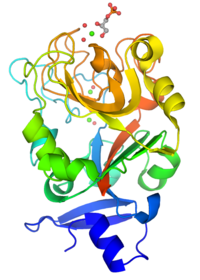
P142 Class I variation outside the antigen recognition domain is limited in an argentine registry population
Sign Up to like & getrecommendations! Published in 2017 at "Human Immunology"
DOI: 10.1016/j.humimm.2017.06.202
Abstract: Aim The aim of this study was to use next generation DNA sequencing (NGS) to characterize full length HLA class I gene diversity in 1472 volunteers for the unrelated donor registry in Argentina. Methods DNA… read more here.
Keywords: variation; class; antigen recognition; hla ... See more keywords

Continue to focus clinical decision-making on the antigen recognition domain for the present.
Sign Up to like & getrecommendations! Published in 2019 at "Human immunology"
DOI: 10.1016/j.humimm.2018.04.010
Abstract: Next generation DNA sequencing has facilitated the routine characterization of complete HLA gene sequences. These data complement structural and functional studies of HLA elements encoded outside of the exons specifying the antigen recognition domain. This… read more here.
Keywords: clinical decision; recognition domain; decision making; antigen recognition ... See more keywords

Recognition in the Domain of Molecular Chirality: From Noncovalent Interactions to Separation of Enantiomers.
Sign Up to like & getrecommendations! Published in 2022 at "Chemical reviews"
DOI: 10.1021/acs.chemrev.1c00846
Abstract: It is not a coincidence that both chirality and noncovalent interactions are ubiquitous in nature and synthetic molecular systems. Noncovalent interactivity between chiral molecules underlies enantioselective recognition as a fundamental phenomenon regulating life and human… read more here.
Keywords: molecular chirality; chirality noncovalent; domain molecular; noncovalent interactions ... See more keywords

The N-terminal tail coordinates with carbohydrate recognition domain to mediate galectin-3 induced apoptosis in T cells
Sign Up to like & getrecommendations! Published in 2017 at "Oncotarget"
DOI: 10.18632/oncotarget.17760
Abstract: Galectin-3 is a galectin with a unique flexible N-terminal tail (NT) connected to the conserved carbohydrate recognition domain (CRD). Galectin-3 is associated with tumor immune tolerance and exhibits an ability to induce T cell apoptosis.… read more here.
Keywords: terminal tail; galectin; apoptosis; induced apoptosis ... See more keywords

Small Peptide Derivatives Within the Carbohydrate Recognition Domain of SP-A2 Modulate Asthma Outcomes in Mouse Models and Human Cells
Sign Up to like & getrecommendations! Published in 2022 at "Frontiers in Immunology"
DOI: 10.3389/fimmu.2022.900022
Abstract: Surfactant Protein-A (SP-A) is an innate immune modulator that regulates a variety of pulmonary host defense functions. We have shown that SP-A is dysfunctional in asthma, which could be partly due to genetic heterogeneity. In… read more here.
Keywords: asthma; mouse models; carbohydrate recognition; recognition domain ... See more keywords